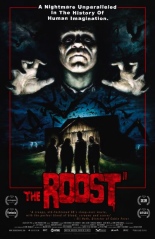
 About the only thing The Roost has going for it are its wraparound segments, aping the old-school horror-host TV showcases of yesteryear — in this case, the fictional Frightmare Theatre!, a black-and-white affair with the great Tom Noonan as our guide. He knocks the film that will follow, calling it “truly wretched” and getting in a pun or two as he teases that it is “hot on the entrails of four young people on their way to a wedding.”
About the only thing The Roost has going for it are its wraparound segments, aping the old-school horror-host TV showcases of yesteryear — in this case, the fictional Frightmare Theatre!, a black-and-white affair with the great Tom Noonan as our guide. He knocks the film that will follow, calling it “truly wretched” and getting in a pun or two as he teases that it is “hot on the entrails of four young people on their way to a wedding.”
Cut to The Roost — in color, but über-grainy — with said four young people exhibiting zero personality while driving through rural roads at night. Crossing a bridge, the car’s front windshield comes glass-to-face with a bat, causing them to veer off the road. They go off to find help, but just find more and more bats.
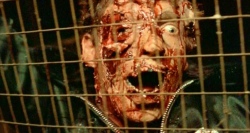 Yep, bats. Have such things ever been frightening on film? That was meant as rhetorical, but no, they haven’t, not in 1979’s Nightwing, and certainly not in 1997’s Bats, in which Lou Diamond Phillips looked forever constipated. But scariness — or lack of — is not The Roost‘s real issue; slowness is. It’s the deathly pace that kills it.
Yep, bats. Have such things ever been frightening on film? That was meant as rhetorical, but no, they haven’t, not in 1979’s Nightwing, and certainly not in 1997’s Bats, in which Lou Diamond Phillips looked forever constipated. But scariness — or lack of — is not The Roost‘s real issue; slowness is. It’s the deathly pace that kills it.
Even at only 80 minutes, the movie drags. Had writer/director Ti West (who reunited with Noonan to great effect in 2009’s creepy The House of the Devil) broken up his thin story with more bits from the horror host, rather than just having him bookend the thing, The Roost could rustle up some enthusiasm among viewers. A giant in indie horror, West wields considerable talent — just not here in this, his first feature. —Rod Lott

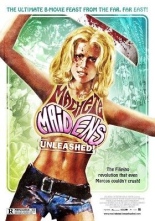
 As if Mark Hartley’s 2008 documentary,
As if Mark Hartley’s 2008 documentary,  Chock full of interviews with the movement’s filmmakers and performers who remain alive (plus John Landis), the excellent Unleashed also considers the careers of Cirio H. Santiago (Savage!,
Chock full of interviews with the movement’s filmmakers and performers who remain alive (plus John Landis), the excellent Unleashed also considers the careers of Cirio H. Santiago (Savage!, 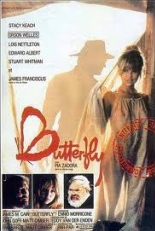
 It’s hard to believe there was a time when the name Pia Zadora was on everyone’s quivering lips. For one moment in history, she was lauded as our nation’s highest female ideal, a growth-stunted pixie with a mischievous, Lolita-esque twinkle in her eye. She was the Megan Fox of her time — a time when our country was less judgmental about its objects of sexual fantasies. Today, she’s nothing more than another cultural oddity, a punch-line name best left for Trivial Pursuit questions and cameos in John Waters flicks, but she got her masterpiece in the Depression-era, depression-inducing melodrama
It’s hard to believe there was a time when the name Pia Zadora was on everyone’s quivering lips. For one moment in history, she was lauded as our nation’s highest female ideal, a growth-stunted pixie with a mischievous, Lolita-esque twinkle in her eye. She was the Megan Fox of her time — a time when our country was less judgmental about its objects of sexual fantasies. Today, she’s nothing more than another cultural oddity, a punch-line name best left for Trivial Pursuit questions and cameos in John Waters flicks, but she got her masterpiece in the Depression-era, depression-inducing melodrama 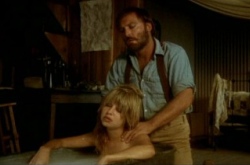 Orson Welles shows up as a drunken judge and bloats all over the screen, delivering a wonderfully unintelligible performance that is so bitter and careless and drunk on Paul Masson, I doubt he knew the cameras were rolling. But maybe that’s just Matt Cimber’s charmingly free-flowing directorial style which, coincidentally, made him the Razzies’ pick for worst director that year. (That’s okay, Matt, the Razzies have been the stupidest award show since … well, ever. Consider the source.)
Orson Welles shows up as a drunken judge and bloats all over the screen, delivering a wonderfully unintelligible performance that is so bitter and careless and drunk on Paul Masson, I doubt he knew the cameras were rolling. But maybe that’s just Matt Cimber’s charmingly free-flowing directorial style which, coincidentally, made him the Razzies’ pick for worst director that year. (That’s okay, Matt, the Razzies have been the stupidest award show since … well, ever. Consider the source.)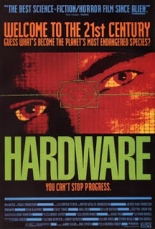
 True story: I first saw
True story: I first saw 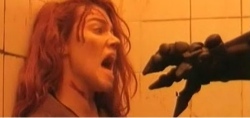 Not much for story, but director Richard Stanley keeps things moving through integrity of vision and an absolutely gorgeous giallo color scheme, layering it with a subtext of man’s symbiotic relationship with machines, first glimpsed through Moses’ artificial hand. Invaluable character actor William Hootkins gets to portray one of filmdom’s most depraved perverts, and Simon Boswell’s throbbing, Western-tinged score will earworm its way into your skull.
Not much for story, but director Richard Stanley keeps things moving through integrity of vision and an absolutely gorgeous giallo color scheme, layering it with a subtext of man’s symbiotic relationship with machines, first glimpsed through Moses’ artificial hand. Invaluable character actor William Hootkins gets to portray one of filmdom’s most depraved perverts, and Simon Boswell’s throbbing, Western-tinged score will earworm its way into your skull.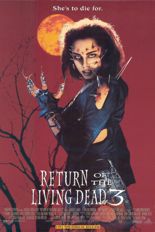
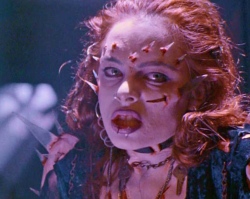 Julie (Melinda Clarke,
Julie (Melinda Clarke,